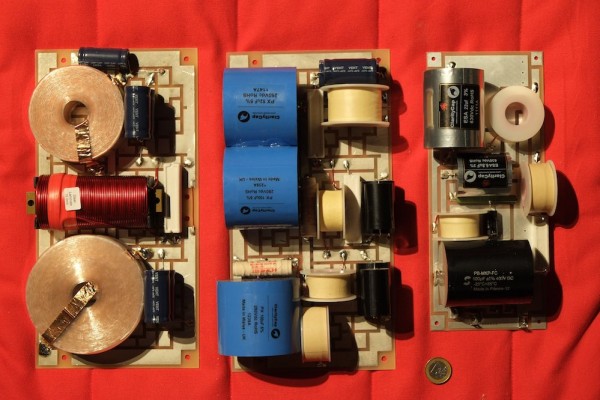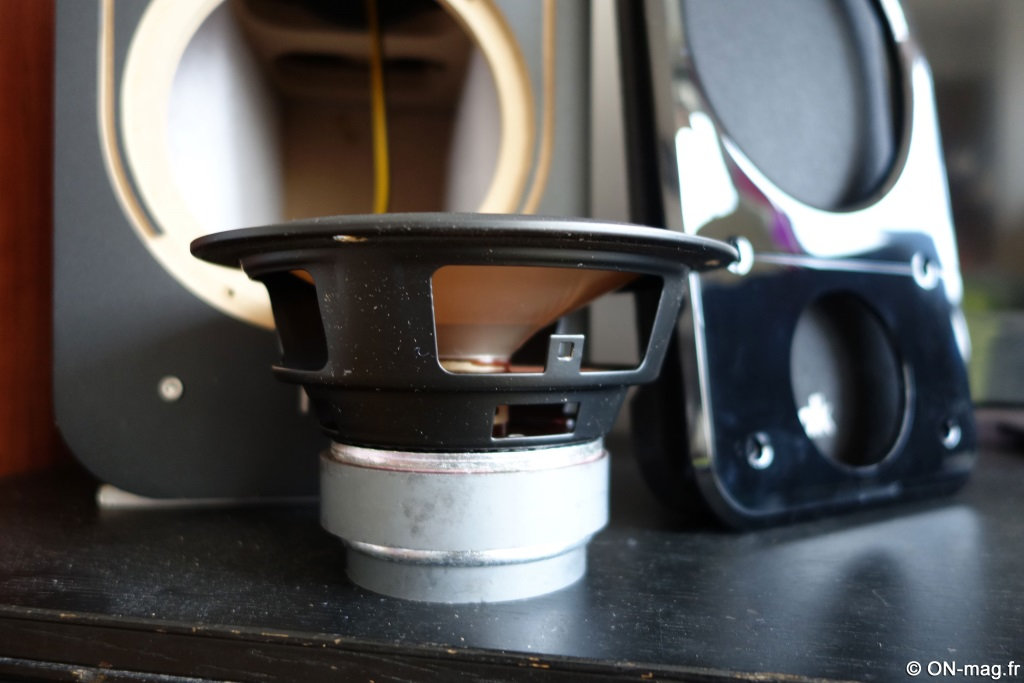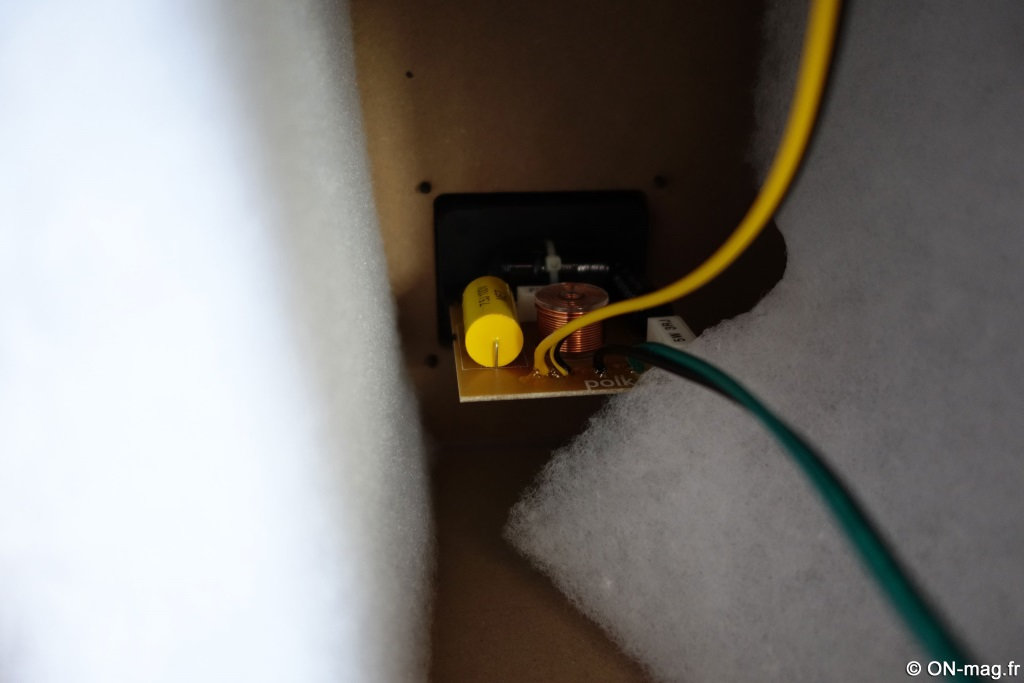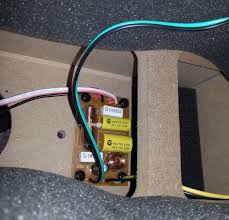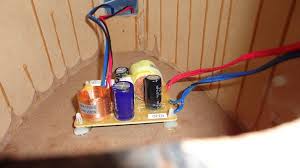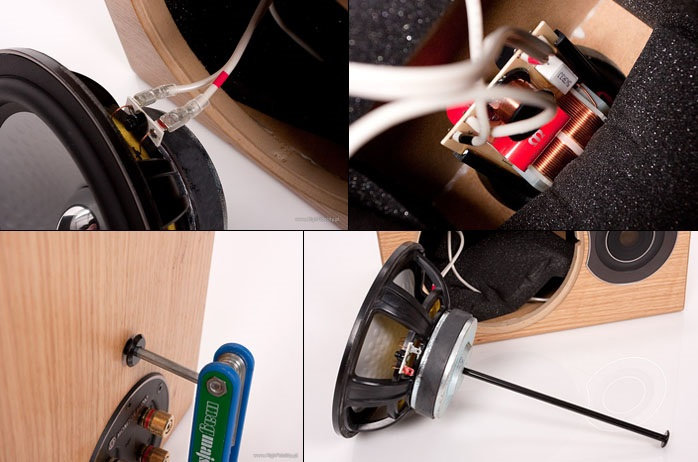Je voudrais tout de même rebondir quant aux Kef Reference année 2001-2014. En me renseignant davantage, j'ai trouvé cette photo du filtre de la 203/2 (je n'ai pas encore trouvé pour les miennes, des 203/1):
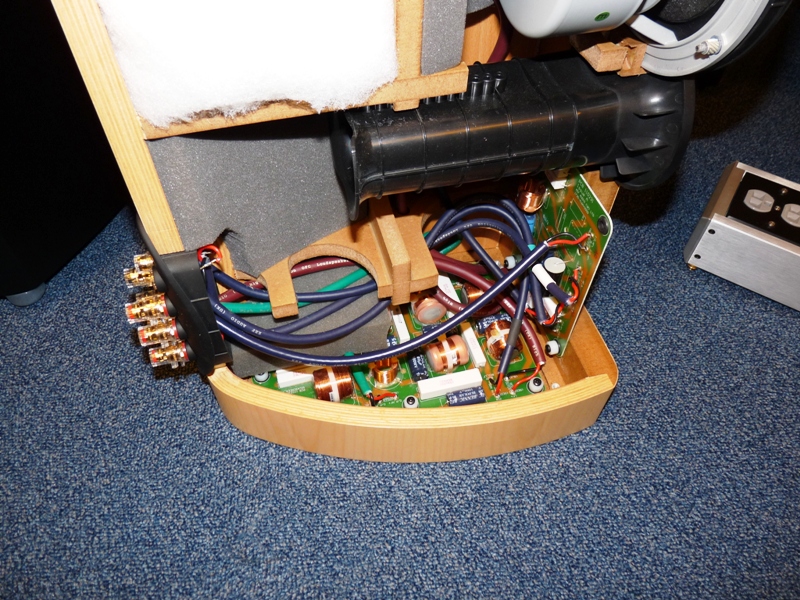
On voit bien qu'il y a deux filtres différents, un à la base de l'enceinte (la photo mise par Subway2400) et un autre posé à la verticale où les condensateurs semblent différents et de meilleure qualité. En continuant mes recherches, je suis tombé sur un article détaillant ces deux filtres et suis arrivé à la conclusion que le filtre posé à l'horizontale et mis en avant par Subway2400 est le filtre des basses, donc ne nécessitant pas de condensateurs de haute qualité (dixit Subway2400 lui-même), et l'autre celui des aigus/médiums avec des condensateurs de meilleure qualité. Voici
l'article et le passage qui nous intéresse:
The cross-over is mounted on two big PCBs. Differently than in the loudspeakers from Bowers&Wilkins, those are high order filters, hence the number of elements. In the mid-high range we have air coils and polypropylene capacitors from the French company SRCm and in the low frequency section we have electrolyte capacitors and core coils. The bass section of the cross-over is screwed to the thick removable bottom of the enclosure, and the midrange-tweeter section is mounted to the front baffle, also from beneath. The whole speaker is cabled by a thick OFC braid, branded with the KEF logo. The cables are attached to modeled module fitting with its shape to the narrow back plate of the speaker. This is a very worked out setup – as we have three pairs of terminals (very nice WBT), allowing even tri-wiring or tri-amping and the capability to adjust the sound to the listening room, by means of solid, gold plated screws provided by WBT, that act like cramps. We have two sub-ranges – treble, with two cramps, and bass. Such versatility is an absolute rarity, and the regulations, seemingly subtle, transcribe into significant changes in the sound. Equally rare are the solid cramps like here: instead of the common metal plates we have solid, copper wires with nice, although not very expensive, plugs.
Qu'en pensez-vous? Et l'avis de l'expert ici (Subway2400 pour ne pas le nommer)? Certes, ce ne sont pas les filtres des 203/1 (je n'ai pas encore trouvé d'articles, ni de photos), mais ça ne devrait pas être totalement différent. Si quelqu'un trouve des détails sur les 203/1, qu'il en fasse profiter la communauté.
Merci pour vos retours.
general-haute-fidelite/ecoute-kef-ref-207-2-chez-elecson-hier-soir-t29880905.html





